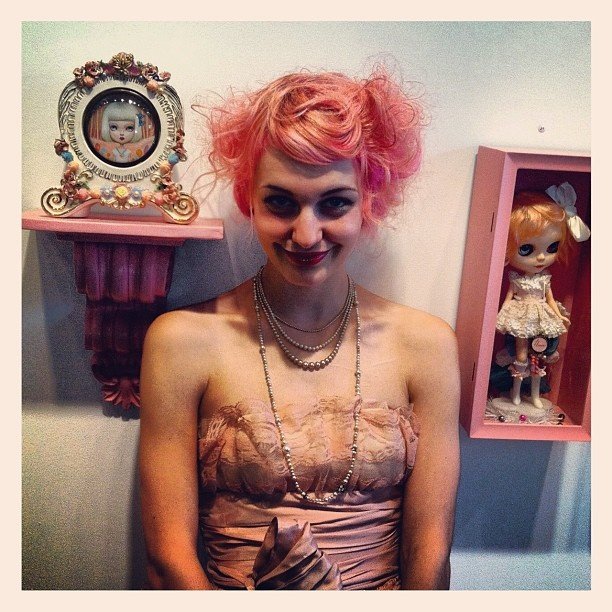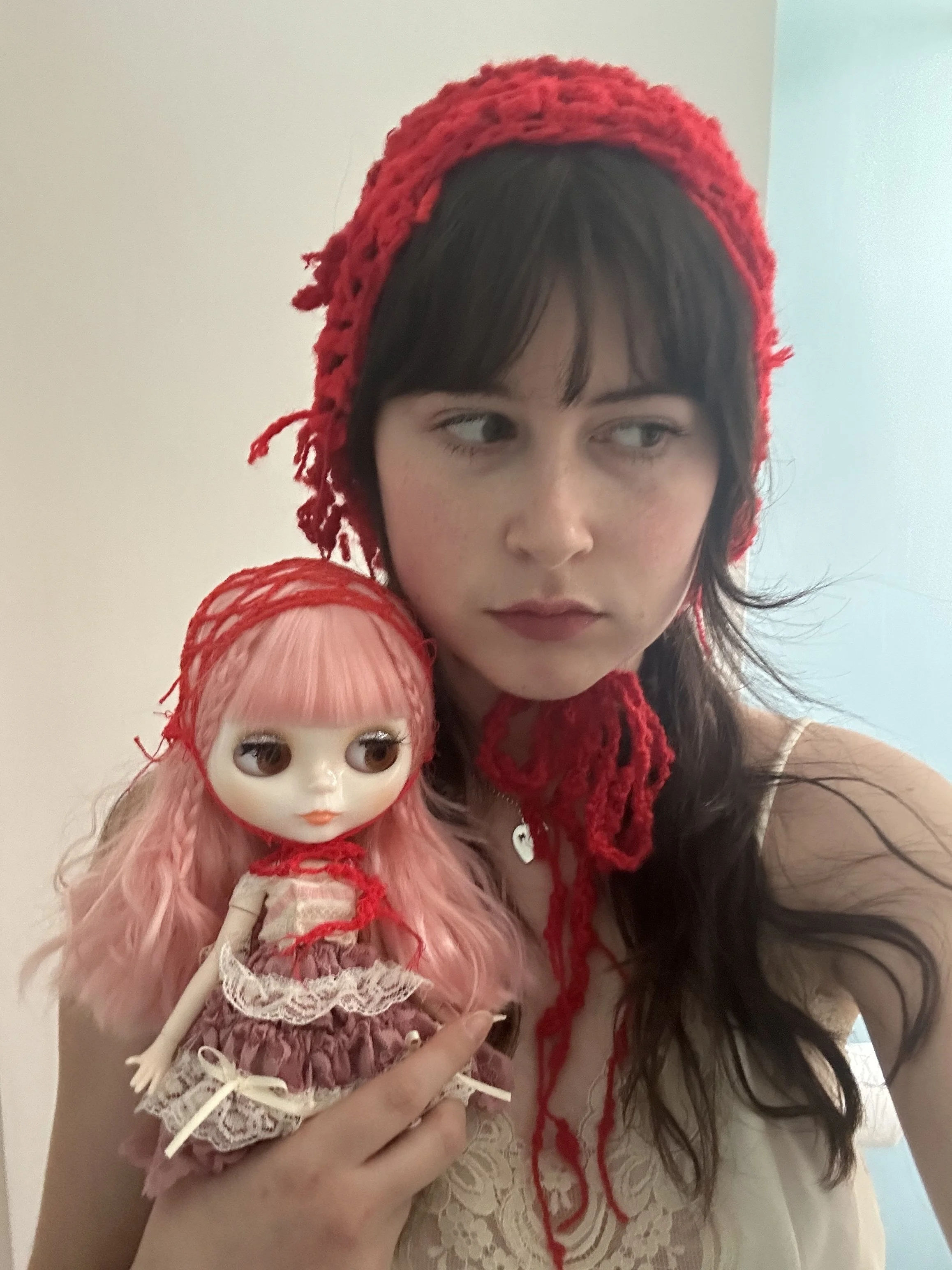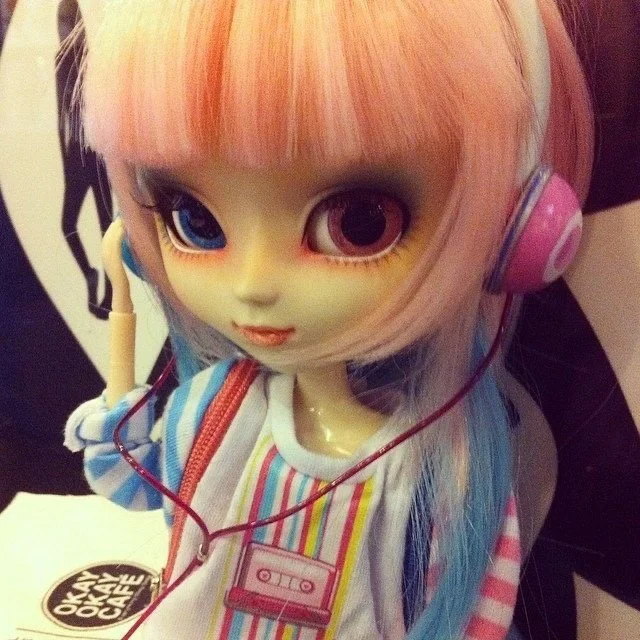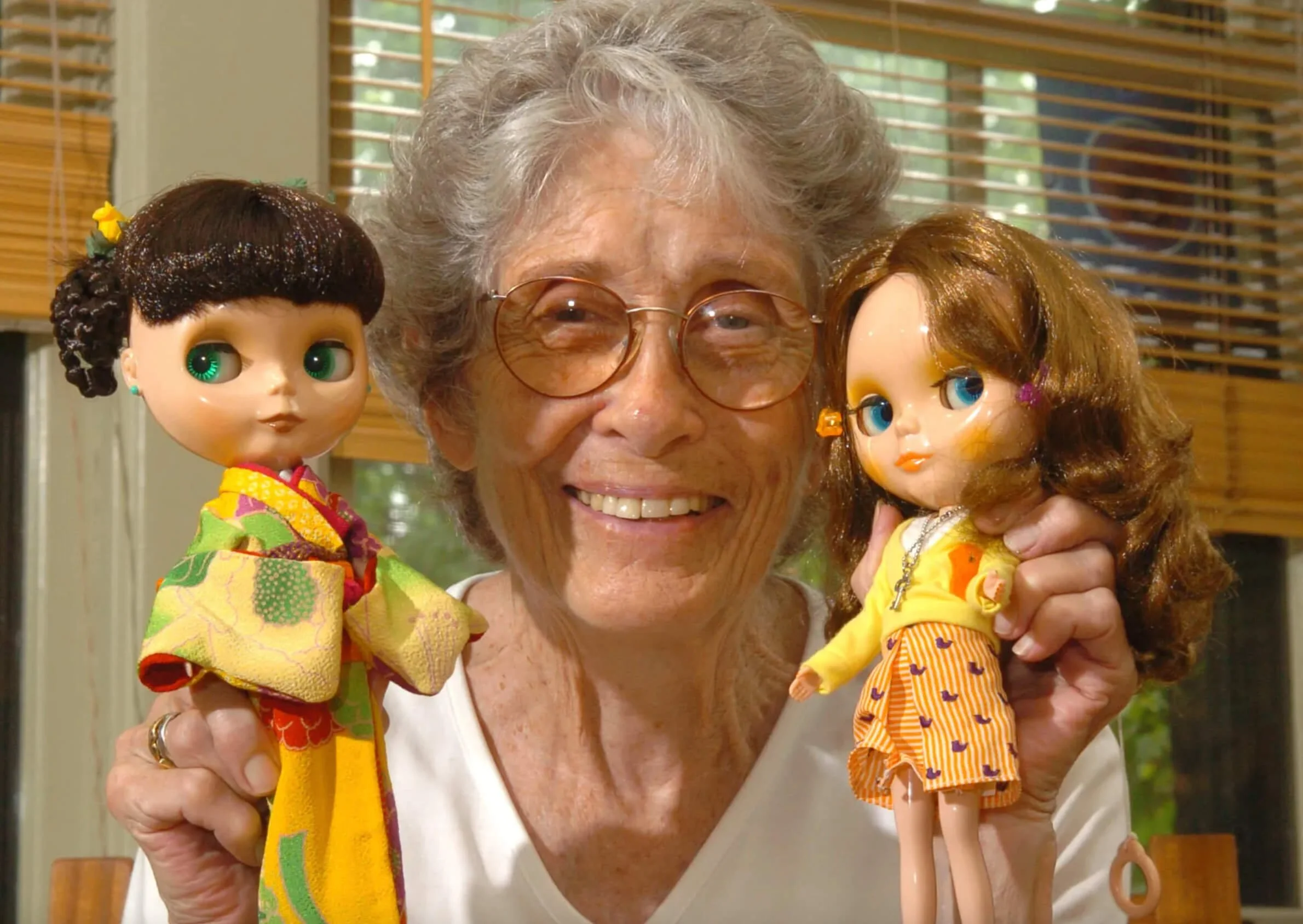Behind the internet’s love of Blythe dolls
I’ve always been a doll lover. When I was in seventh grade, I DESPERATELY wanted a Pullip doll. What is a Pullip doll you ask? If you’re a fan of Blythe dolls, maybe you’ve come across a Pullip doll before. They’re a similar concept (but from two separate brands): a fashion doll with oversized eyes that can change colors with the pull of a string and beautiful colored hair, except Pullips have a slimmer looking face.
There is an entire world behind these dolls. Rather than being a toy, they are a collector’s item. Something common among Blythe and Pullip collectors is the customization process. Somewhere, manufacturers produce blank versions of the dolls, so doll hobbyists can reshape face molds, paint eye chips, and repaint faces, making the doll completely their own. Pullip even sells official “make it own” kits, encouraging people to customize. The kits come with the blank doll only, no hair or clothes, so all the other pieces need to be purchased or made separately. As a twelve year old, there was maybe a month or so where this was all I thought about. I would daydream about these dolls all day at school, and when I got home, I would surf the web for clothes I could buy for her. I filled a cart with things once from the Pullip site, ready to drop $100 of preteen birthday money savings on all the required materials, but my mom said no. Shipping from overseas would’ve added a significant cost to the order. I was devastated.
To supplement this need to customize my own doll, I would repaint Monster High and Ever After High dolls. I had a lot of interesting art hobbies as a middle schooler, let me say that. I was an avid watcher of channels like MyFroggyStuff and Dollightful, both of which customized Barbie-like dolls that didn’t cost a fortune. I would remove their faces with acetone, spray them with some sort of matte-surface spray stuff that I should’ve probably been more careful with (though I would spray it outside and wear a mask), and then redraw their faces with watercolor pencils and shavings of chalk pastels. Sometimes I’d give them new haircuts, and one time I even managed to make a wig by brushing out acrylic yarn and straightening it with a flat iron. I’d sew them clothes and glue false lashes to their tiny faces. This all sounds insane in hindsight. I was twelve. How did I even know what I was doing? It makes so much sense how I turned out the way I am. Making doll clothes was pretty much how I learned to sew.
Then, flash forward to summer of 2023, where my Pinterest and whatever niche of the internet I belong to becomes flooded with pictures of Blythe dolls. I knew about Blythe during my Pullip phase, but always thought they were a little more “scary” looking. Turns out, this isn’t an uncommon thought. I deep-dived the history of Blythe and learned that they were designed by a woman named Allison Katzman, and the toy brand Kenner tried releasing them in the seventies, marketing them as a fashion doll (like Barbie); the main selling point, however, was their eyes. Blythe dolls have a string at the back of their heads that blinks their eyes down and springs them back up, revealing a new eye color and making them look in a different direction. They have four different eye colors in total. But, unfortunately, children of the seventies were not ready for them. Their sales were poor and they were pulled from shelves. Here’s an old commercial.
In the late nineties, though, photographer Gina Garan received an original Kenner Blythe as a gift and began photographing her around different places, like Flat Stanley. She published a book, This Is Blythe, including her photos, and the book was discovered at an event in New York by toy producer Junko Wong. She knew the dolls would do well in Japan, and got 1000 of them manufactured there in 2000 where they gained an instant cult following. The brand Takara produced what is known as the “neo-Blythe”, which are based more loosely on the original Kenner Blythes. A US company called Ashton Drake tried producing replicas of the original Kenner Blythes, but they didn’t sell as well here. They ceased production in 2008, and Takara continued producing them until 2021. Currently, production of the dolls is by the Good Smile Company. Takara created multiple variations for the dolls, changing sizing, materials, and face molds.
Blythe dolls are hard to get your hands on, not to mention the original Kenner dolls. They’re expensive, and usually sold with full outfits (as are Pullip dolls), defining the “look” that they will have in their little doll life. I think this is where the popularity behind customization comes in. I’ve come across a couple random Blythe artists on the internet and the process of customizing definitely gives them the “cuter” look that I usually see in photos online. Their lips are made to look poutier, and their faces are usually matte. Customized Blythes are (usually) off-brand Blythes. The official Blythes usually don’t have fully articulated bodies, if I’m not mistaken. But, custom Blythes have joints at elbows, knees, wrists, and ankles, making them more poseable. I’m not sure who manufactures the blank kits, but I doubt it’s related to Takara. I ordered myself a customizable off-brand Blythe off of Etsy summer of 2023 after everyone's initial obsession with them started. The Pullip phase was coming back and I couldn’t resist. She came with hair, luckily, and it’s a bubblegummy, almost coral pink. I gave her a little haircut, which was actually very difficult since her hair is super thick. I took her apart, and did some research on how to remove the spring in the eye mechanism and modify it to not automatically reopen her eyes after pulling the eye color string. I wanted her eyes to be able to stay closed so I could give her pretty glittery eye makeup. I painted some silver glitter onto her eyelids, gave her new lashes, and sewed her a lacy dress. If I had the money to buy customized Blythes (they’re pricey, but rightfully so), or to get all the materials to make my own, I’d be doing it all the time. It’s so fun. I don’t have the tools to go too far with altering my Blythe, so she has the pretty classic Kenner look (shiny plastic face, basic lip shape, subtle blush on cheeks). She’s my prized possession and I love her. Sometimes I have urges to bring her places with me.
Funny enough, I remembered before ordering my Blythe that there had been a Blythe and Littlest Pet Shop collab back in the day. My sister Sophie and I had a little blonde doll that rode on a moped and had a pet that rode in the sidecar. It was cute. I wonder what the story is behind this collab.
I’m happy people are loving Blythes now. It makes me happy for the original designer whose dolls were seen as creepy that now they’re having a second resurgence after the initial hype in Japan in the early 2000s. While Blythe photos have become more popular within the past couple of years, even sparking a meme-like format of text over cute photos, most photos seem to stem from 2000s-2010s Flickr pages. I’m not entirely sure what has sparked this resurgence, but it seems that these days all it takes is one good TikTok to reach a niche audience. I think we’re all drawn to their stylish outfits, and their chic, carefree look. They exude such coolness for a doll, on top of their obvious sweetness. Every image I’ve seen of them is so perfect. I’ve definitely had thoughts of just becoming a Blythe doll photographer and miniature fashion designer. I unfortunately cannot find sources for any of the following images, so if anyone reading this knows who they belong to please let me know. Pinterest is a hellscape when trying to find who any photos belong to.

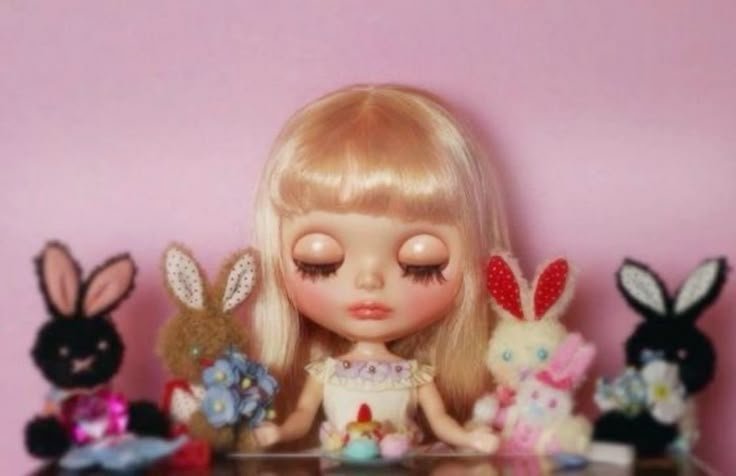





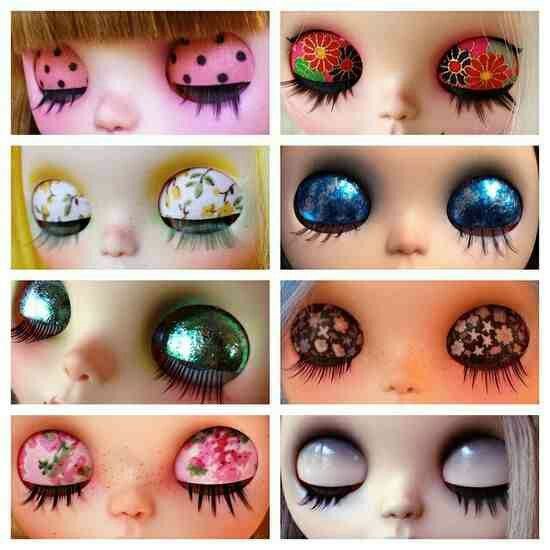
Oh, speaking of fashion design, there is also the collaboration with Irregular Choice shoes, which included a variety of people-sized mary janes and heels covered in Blythe photos. These need to become available again. Please. I want them so bad. There’s been an Anna Sui x Blythe collab. And a Bottega Ventta x Blythe collab with giant Blythe dolls in storefronts, which honestly freaks me out a little, but the ad campaigns are awesome. Petra Collins’s brand I’m Sorry too. And Urban Outfitters was even selling the Good Smile Company dolls recently.


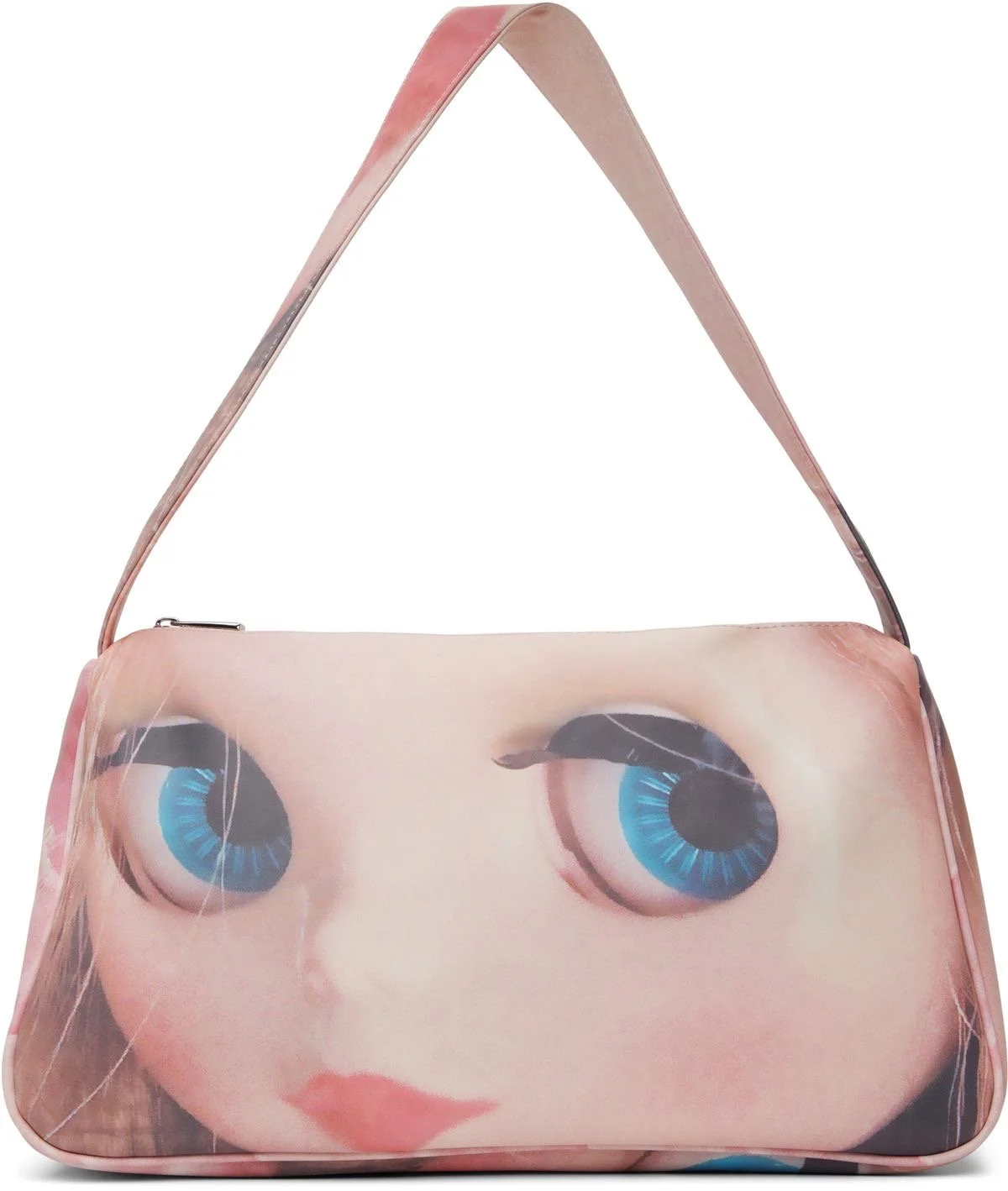
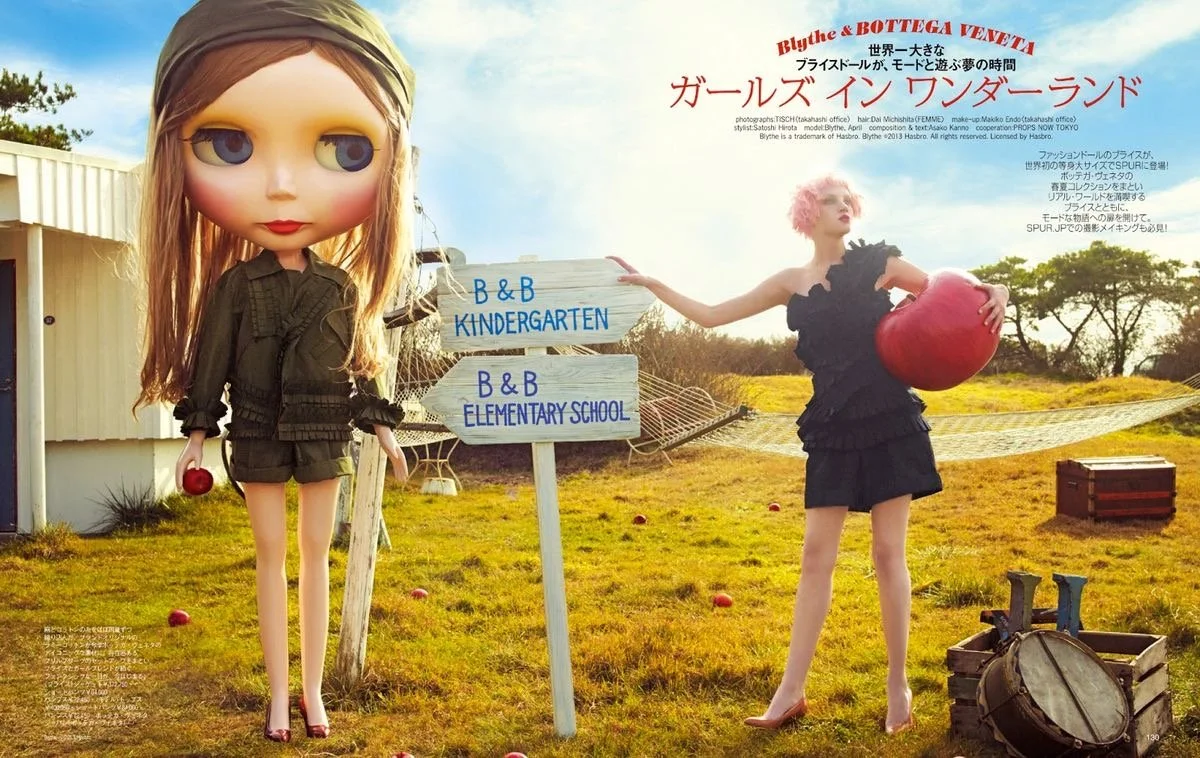
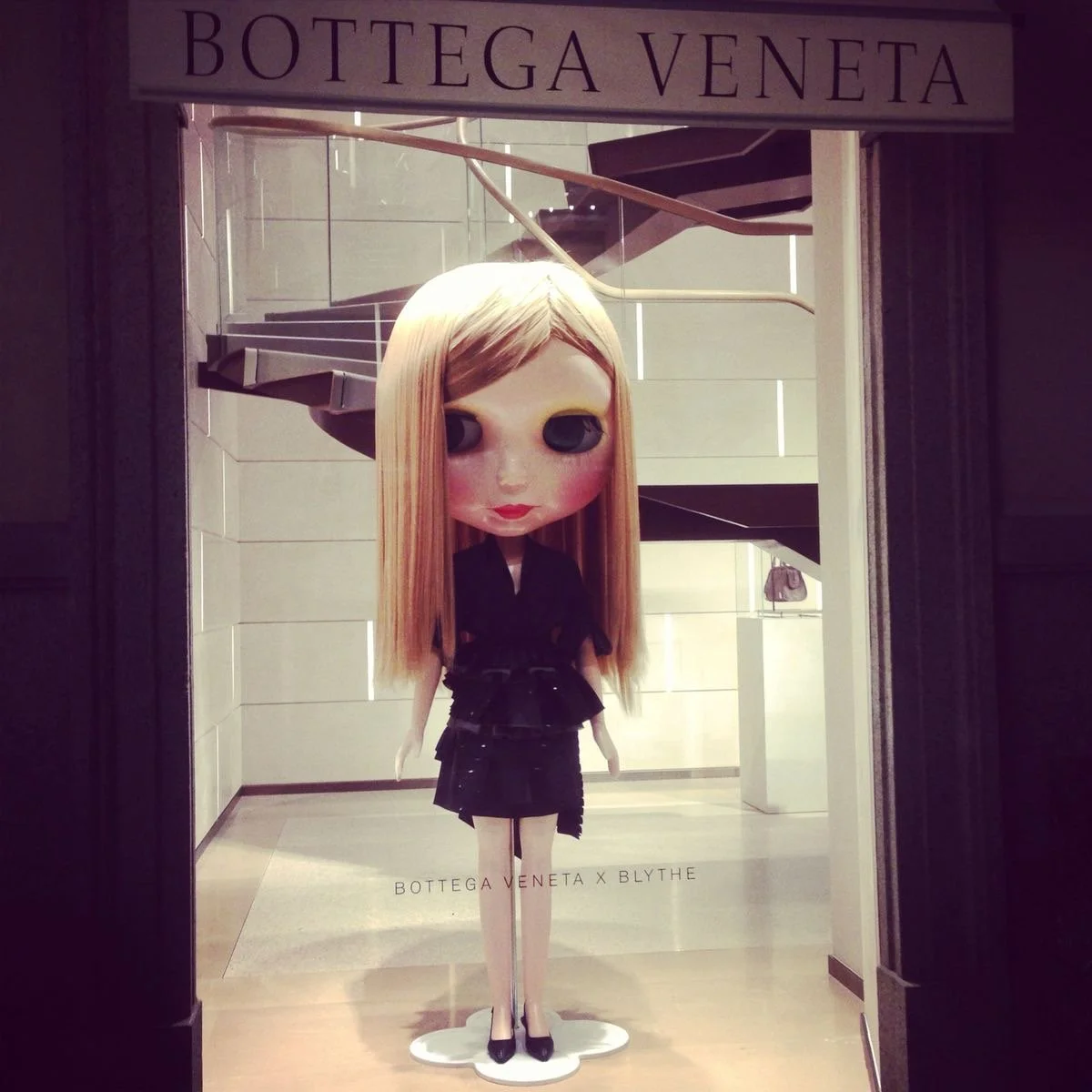
I also love how artists such as Mab Graves have incorporated Blythe dolls into their work. Not only was she painting Blythe-like characters, but was customizing the dolls as well. Here’s some pics of her Blythe related work. Blythe is an art form! Here are links to a doll customizer’s site and a cool Flickr with lots of Blythe photography.
